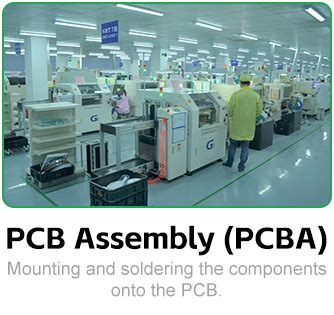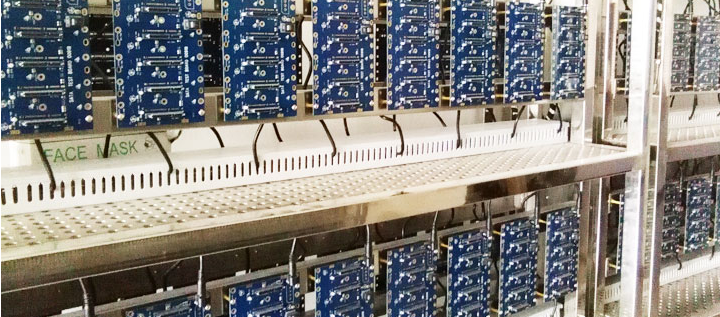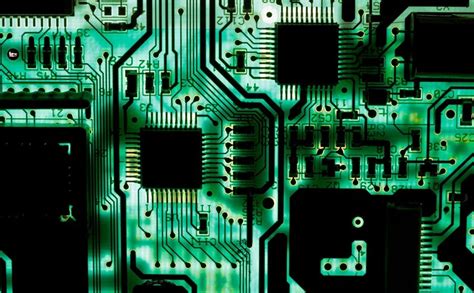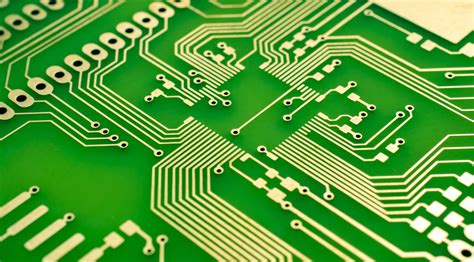Streamlining Success: The Benefits of Consigned PCB Assembly
Key Takeaways
Consigned PCB assembly, often referred to as PCBA, offers a multitude of advantages that can significantly enhance the electronics manufacturing landscape. By adopting this strategy, companies can maintain tighter control over their supply chains and optimize their production processes. One of the primary benefits is improved efficiency, as manufacturers can directly manage the components used in assembly, ensuring that only high-quality parts are utilized. Moreover, this approach facilitates quicker turnaround times by reducing dependencies on third-party suppliers. Additionally, consigned PCB assembly allows for better cost management; businesses can minimize wastage and excess inventory through precise inventory tracking and just-in-time delivery practices. As a result, firms can achieve notable savings and allocate financial resources more effectively. In today’s hyper-competitive market, integrating consigned PCBA processes not only streamlines production but also improves responsiveness to market demands, providing a strategic edge that is vital for sustaining success in the electronics industry. The adoption of these practices not only enhances operational workflows but also elevates overall product quality, creating a compelling case for embracing consigned assembly within the sector.
Understanding Consigned PCB Assembly: An Introduction
Consigned PCB assembly is a vital practice in the realm of electronics manufacturing, granting companies the ability to streamline their production processes effectively. In this model, manufacturers procure their own components, which are then sent to a contract manufacturer for assembly. This arrangement not only fosters greater control over the components used in PCB assembly but also enhances the overall quality of the final product. By engaging in consigned PCB assembly, businesses can tailor their production to meet specific project demands while optimizing inventory management.
One of the key advantages of this strategy is that it significantly reduces lead times since essential components are readily available on-site. This can be especially beneficial for companies aiming for rapid product development cycles. Moreover, having control over component sourcing allows firms to take advantage of cost-effective suppliers, thus ensuring that they remain competitive within the fast-paced electronics market.
“Incorporating consigned assembly can lead to improved operational efficiency and better budget management.”
Additionally, consigned PCBA promotes enhanced collaboration between manufacturers and their suppliers, enabling transparency and communication that can lead to innovative solutions during the production process. As technology continues to evolve, embracing such practices not only prepares organizations for current market demands but also positions them strategically for future challenges in electronics manufacturing.
Key Benefits of Consigned PCB Assembly in Electronics Manufacturing
The landscape of electronics manufacturing is constantly evolving, and one of the key advancements is the consigned PCB assembly (PCBA) approach. By allowing companies to manage their component inventory and assembly processes more effectively, this technique offers several notable advantages. Firstly, it fosters flexibility in production schedules; manufacturers can react more swiftly to demand fluctuations, reducing lead times and ensuring that products reach the market in a timely manner. This agility directly enhances the overall efficiency of operations, as firms can scale their production up or down based on real-time market needs without over-investing in unnecessary stock.
Moreover, one of the most significant benefits lies in cost reduction. With consigned PCB assembly, companies can minimize their expenditures on components. By purchasing components on a consignment basis, they only pay for parts when they are used in production. This strategy not only alleviates cash flow concerns but also decreases the costs associated with inventory management and waste. Additionally, because manufacturers are actively involved in sourcing and storing components, they have greater control over quality and can ensure that only reliable parts are used in their assemblies.
Another key advantage is enhanced collaboration between companies and assembly partners. This partnership encourages knowledge sharing about best practices and technological advancements, providing access to improved techniques that ultimately enhance product quality and performance. In summary, the integration of consigned PCB assembly offers remarkable benefits that streamline processes, promote financial prudence, and elevate product quality in an increasingly competitive electronics market.
Enhancing Efficiency Through Consigned PCB Assembly Processes
In today’s fast-paced electronics industry, the need for greater efficiency is paramount. Consigned PCB assembly offers a streamlined approach that benefits both manufacturers and clients. By allowing companies to supply their own components, PCBA processes become more flexible and responsive to market demands. This flexibility can lead to a significant reduction in lead times, enabling quicker product turnarounds.
The just-in-time delivery of components ensures that manufacturers maintain optimal inventory levels, minimizing the risk of excess stock and associated costs. Additionally, this method enhances communication between suppliers and manufacturers; sharing insights regarding component availability can lead to more informed decision-making.
Moreover, implementing consigned PCB assembly processes often leads to improved quality control. Since clients are directly involved in providing the components, they can ensure that they meet their specific standards and requirements. This involvement helps reduce errors and defects during assembly, further enhancing overall process efficiency.
| Benefits of Consigned PCB Assembly | Description |
|---|---|
| Reduced Lead Times | By supplying components directly, companies can streamline their production schedules. |
| Enhanced Flexibility | Customization according to changing market demands becomes easier with direct component involvement. |
| Improved Quality Control | Client oversight of components helps mitigate risks related to defects or mismatches. |
| Cost Efficiency | Reduction in unnecessary inventory leads to overall cost savings in manufacturing processes. |
Ultimately, consigned PCB assembly not only fosters efficiency but also positions companies for long-term success in an increasingly competitive landscape, making it an essential strategy for electronics manufacturing today.
Cost Reduction Strategies: How Consigned PCB Assembly Saves Money
Consigned PCB assembly has emerged as a pivotal strategy for companies seeking to reduce costs while maintaining high production standards. One of the primary ways this method achieves cost savings is through minimizing material costs. By allowing companies to provide their own components, organizations can capitalize on bulk purchasing discounts or select suppliers that meet their budgetary criteria. Additionally, consigned PCBA reduces the overhead usually associated with inventory management, as manufacturers do not need to stockpile components they might not use efficiently or in a timely manner. This flexibility in sourcing ensures that parts are only ordered as needed, leading to improved cash flow and less waste.
Furthermore, the implementation of consigned PCB assembly often results in decreased labor costs. Since manufacturers are equipped with specialized processes and automated systems, they can streamline assembly lines and significantly reduce assembly time. This efficiency not only leads to faster production rates but also minimizes labor hours required for each batch of printed circuit boards, thus enhancing overall productivity.
Moreover, this approach helps mitigate risks associated with obsolescence. By utilizing a consignment model, manufacturers can react swiftly to changing market demands and technological advancements without being burdened by excess inventory of outdated components. As a result, companies are able to allocate resources more strategically toward innovation rather than excess stockpiles.
In summary, consigned PCB assembly is a formidable strategy for cost reduction within the electronics manufacturing landscape that enables organizations to enhance their operational efficiency while keeping expenditures in check. By leveraging tailored procurement approaches and streamlined processes, companies can position themselves competitively in today’s dynamic marketplace.
Streamlining Production: The Role of Consigned PCB Assembly
In the realm of electronics manufacturing, consigned PCB assembly plays a pivotal role in refining production processes and enhancing overall efficiency. By utilizing a pcba model where manufacturers receive the required components directly from clients, companies can significantly streamline their workflows. This method allows for better management of inventory levels, reducing lead times and minimizing waste. When outsourcing certain assembly tasks through consignment, businesses can concentrate on their core competencies while benefitting from the specialized expertise of assembly partners. The result is not only a more efficient operation but also a heightened ability to adapt to fluctuations in market demand. Ultimately, consigned PCB assembly emerges as a strategic approach that fosters agility and precision in production, ensuring that manufacturers remain competitive and responsive in an ever-evolving landscape. The integration of this model into production strategies is crucial for companies aiming to optimize their manufacturing processes and deliver high-quality products effectively.
Navigating the Competitive Electronics Market with Consigned Assembly
In an increasingly crowded marketplace, companies must leverage every advantage to remain competitive. Consigned PCB assembly offers a strategic approach that not only boosts efficiency but also enhances flexibility in production. By outsourcing PCBA processes while maintaining control over component supply, manufacturers can adapt to market changes swiftly. This model allows organizations to reduce lead times and ramp up production capabilities without the risk of overcommitting resources. In essence, firms implementing consigned PCB assembly can better manage their inventory and production schedules, leading to higher responsiveness to customer demands. Furthermore, this approach facilitates more effective collaboration between manufacturers and suppliers, as both parties work toward common goals without the layers of complexity usually involved in traditional assembly methods. By integrating consigned assembly into their operational strategies, companies position themselves not just to survive but thrive amidst market fluctuations. The adaptability and streamlined processes afforded by this model are indispensable assets for navigating today’s competitive electronics landscape effectively.
Quality Control in Consigned PCB Assembly: Ensuring Excellence
In the realm of pcba, maintaining rigorous quality control is paramount to ensure the final product meets industry standards and customer expectations. Consigned PCB assembly facilitates enhanced oversight throughout the manufacturing process, allowing for a more streamlined approach to quality assurance. By integrating client-supplied components, manufacturers can focus on the assembly and testing phases with a clear understanding of component specifications. This direct involvement fosters a sense of accountability among all parties involved. Furthermore, utilizing advanced testing techniques such as Automatic Optical Inspection (AOI) and In-Circuit Testing (ICT) enhances the ability to identify defects early in the production cycle. The result is not only minimized rework but also improved overall efficiency in production processes. As the electronics market becomes increasingly competitive, prioritizing quality control in consigned PCB assembly helps organizations not only meet regulatory compliance but also strengthens their reputation for reliability and excellence within the industry. Such commitment to quality ultimately drives customer satisfaction and encourages repeat business, solidifying a company’s position in the market.
Future Trends in Consigned PCB Assembly and Their Implications
As the electronics industry continues to evolve, consigned PCB assembly (PCBA) is poised to undergo significant transformations driven by technological advancements and market demands. One of the most noteworthy trends is the increasing adoption of automation in PCB assembly processes. With the integration of robotics and artificial intelligence, manufacturers are able to enhance precision and reduce cycle times, thereby ensuring high-quality results while minimizing human error. Furthermore, the rise of Internet of Things (IoT) devices is prompting companies to consider more customized PCBA solutions that can adapt quickly to changing specifications.
The emphasis on sustainability is also influencing future trends in consigned PCB assembly. Companies are increasingly focusing on eco-friendly practices by selecting materials that are less harmful to the environment and implementing manufacturing processes that reduce waste. This shift not only meets regulatory requirements but also appeals to consumers who are becoming more environmentally conscious.
Additionally, as globalization continues to shape supply chains, there will be a greater need for strategic partnerships in PCB assembly services. Collaborative approaches can improve flexibility and responsiveness in meeting market needs, allowing businesses to navigate uncertainties more effectively. The implications of these trends emphasize a future where consigned PCB assembly not only enhances operational efficiency but also fosters innovation and sustainability within the electronics manufacturing landscape.
Conclusion
In conclusion, the adoption of consigned PCB assembly presents a significant opportunity for manufacturers looking to enhance their operational efficiency and reduce costs. By leveraging this model, companies can enjoy several key benefits that not only streamline their production processes but also position them favorably in a highly competitive market. The integration of pcba solutions allows for a more agile and responsive supply chain, ensuring that components are sourced and assembled in a manner that meets specific project demands. Moreover, the focus on quality control throughout the pcb assembly process helps maintain high standards that foster customer trust and satisfaction. As advancements in technology continue to shape the landscape of electronics manufacturing, companies embracing consigned assembly practices are likely to remain at the forefront, reaping rewards that stem from improved efficiency and reduced expenditure. Thus, consigned PCB assembly is not merely an operational choice; it is a strategic initiative that aligns with the evolving needs of today’s marketplace.
FAQs
What is consigned PCB assembly?
Consigned PCB assembly refers to a manufacturing process where a client provides the required components for assembly rather than the manufacturer supplying them. This approach allows for greater flexibility and control over the selection of parts in the production of PCBA.
What are the benefits of consigned PCB assembly?
The key benefits include enhanced efficiency, as manufacturers can focus on assembly rather than sourcing components, and significant cost savings due to reduced component costs and lower holding inventories.
How does consigned PCB assembly enhance efficiency?
By allowing clients to select their own components, manufacturers can streamline their procurement processes, leading to faster production cycles. This efficiency is crucial in the fast-paced electronics market where time-to-market can significantly impact competitiveness.
What cost savings can be achieved through consigned PCB assembly?
Client-sourced components typically allow for bulk purchasing or sourcing from lower-cost suppliers, which reduces overall component costs. Additionally, by managing inventory levels more effectively, companies can minimize overhead costs associated with unsold goods.
Can any type of electronics benefit from consigned PCB assembly?
Yes, almost any electronic product requiring PCBA can utilize this method. It is particularly advantageous for businesses producing specialized or low-volume runs where customizing components is essential for success.







